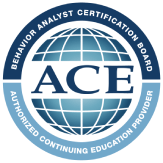Autism Intervention Strategies in Orange County, CA
Regardless of the age of your child, we provide autism intervention services that will help them progress toward their full potential. We have programs for babies/toddlers, school-aged children, young adults, and adults, with an emphasis on tailoring each treatment plan to the individual needs of your child and family.

Understanding Autism Spectrum Disorder
Autism spectrum disorders (ASD) manifest differently in each individual, leading to a wide range of abilities, challenges, and strengths.
Common symptoms include difficulty with social interaction, communication difficulties, repetitive behaviors, and sensory sensitivities.
Diagnosis often occurs in early childhood, but some individuals may not receive a diagnosis until later in life.
Effective Intervention Strategies
Early Intervention
Individualized Approaches
Recognizing that each person with ASD is unique, autism intervention strategies should be tailored to their specific strengths, challenges, and needs.
Social Skills Training
ABA therapy focuses on increasing desired behaviors and skills through positive reinforcement.
Communication and language: Targeted ABA interventions for autism can help individuals with autism spectrum disorders improve their communication skills, including verbal and nonverbal communication.
There are numerous technological tools and applications designed to support individuals with ASD in various areas, including communication, social skills, and organization.

Families play a crucial role in the autism treatmentintervention process, providing support, advocacy, and encouragement. Through active involvement in the individual’s therapy, families enhance learning opportunities and bolster the skills being taught, thereby maximizing the effectiveness of ABA interventions.
Education and training for parents and caregivers can empower them to effectively support their loved ones with ASD at home and in various settings.
Support groups and community resources can offer valuable support networks for families navigating the challenges of ASD.
Deficits in social interaction and communication are hallmark characteristics of autism. Social skills training programs aim to teach children with autism fundamental social behaviors, such as making eye contact, initiating conversations, sharing, and understanding emotions. These interventions often utilize role-playing, visual supports, facilitated peer interactions and peer modeling to enhance social understanding and interaction abilities in a structured and supportive environment.
Visual supports, including picture schedules, visual timetables, and social stories, are invaluable tools for children with autism to comprehend and navigate their daily routines and social situations. Visual aids offer clear and concrete representations of concepts, rules, and expectations, helping children with autism better understand their environment, anticipate upcoming events, and manage transitions effectively.
Many children with autism experience sensory processing difficulties, which can manifest as hypersensitivity or hyposensitivity to sensory stimuli. Incorporating sensory activities into therapy can provide sensory input and improve sensory processing abilities. By providing opportunities for sensory exploration and modulation in a controlled setting, this intervention can help children with autism regulate their responses to sensory stimuli and enhance their engagement and participation in daily activities.
Parents play a vital role in the development and well-being of children with autism. Parent training programs offer education, guidance, and practical strategies to empower parents to support their child’s unique needs effectively. These programs may focus on behavior management techniques, communication strategies, advocacy skills, and self-care strategies for parents. Positive outcomes are more likely when families are more involved in therapy.
Early Intervention (0-3 Years Old)
ABA Therapy (2-21 Years Old)
Adult Services (21+ Years Old)
ABA Therapy FAQs
We are here to help you with any questions you might have surrounding ABA Therapy.
Coping strategies for autism can vary depending on individual preferences and needs. Some common coping strategies include:
Creating and maintaining a structured routine to provide predictability and reduce anxiety.
Utilizing sensory tools and techniques, such as weighted blankets, fidget toys, or noise-canceling headphones, to manage sensory sensitivities.
Engaging in calming activities, such as deep breathing exercises, mindfulness, or sensory breaks, to regulate emotions and reduce stress.
Examples of behavioral therapy for autism include:
Applied Behavior Analysis (ABA) therapy: A structured and individualized approach focusing on behavior modification and skill development.
Pivotal Response Treatment (PRT): A naturalistic behavioral intervention targeting pivotal areas of development, such as motivation, initiation, and social communication.
Cognitive Behavioral Therapy (CBT): A therapeutic approach focusing on identifying and challenging maladaptive thoughts and behaviors, often used to address anxiety, depression, and social difficulties in individuals with autism.
Please Take A Moment To Fill Out our form to qualify for services
ABA Therapy In Orange County
- Monday - Friday: 8:00am - 6:00pm








